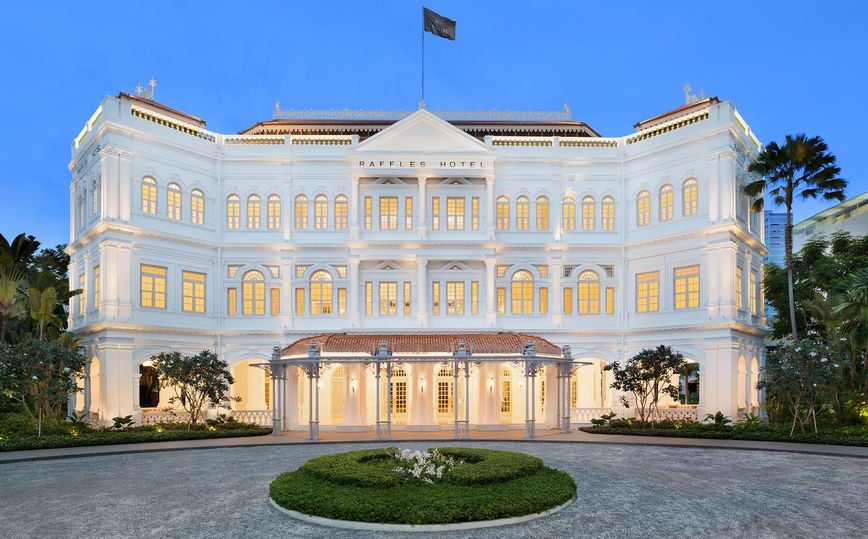Singapore looks to 'staycations' to help fill the tourism hole
Singapore lacks anything resembling a domestic tourism market, so staycation deals are the next-best thing.

In Indonesia, locals can soon fly from Jakarta to the beaches of Bali for a domestic vacation. Tokyo residents can escape the pandemic stress with a hike up Mount Fuji, and New Yorkers can head to the Hamptons on Long Island.
Residents of Singapore have few such options, presenting a massive problem for its battered tourism industry. With borders closed to foreigners, hotels and tourist attractions need to count on ‘staycationers’ to plug the gap in an industry that brought in almost US$20 billion in revenue last year. It’s a tall order.
“Unless we have a return to international business, the hotel industry is going to be decimated as up to 90% of our bookings come from international travelers,” said Michael Issenberg, CEO of Accor's Asia Pacific unit, the largest hotel operator in Singapore.
While tourism everywhere has been hammered by the pandemic, the gradual opening of some domestic travel has given a shot in the arm to airlines and hotels in places like Australia and Vietnam. Rosewood Hotel Group has seen occupancy rates as high as 70% at some of its China properties as leisure travel picks up, said CEO Sonia Cheng.
Singapore’s tourism sector faces a tougher challenge, as the hotels were just given a green light last week to request approval to welcome domestic tourists.
Many locals like teacher Najeer Yusof prefer to save their money and wait for travel to resume in nearby hotspots like Thailand and Malaysia rather than spend it on a hotel down the street.
“There’s more to see and experience overseas at a cheaper cost,” said Yusof. There’s also the “awe factor – getting to see or experience something I won’t otherwise be able to in Singapore, like the mountains and national parks in Indonesia and activities like diving and surfing."
Save now, fly later
Though the city-state of 5.7 million people has reopened its economy after a lockdown of more than two months, its borders are still largely closed. It recorded a historic low of just 750 foreign visitors in April, down from 1.6 million in the same month last year. May’s numbers weren’t much better, at 880.
“In the short-term, hotels, eateries and attractions can re-orientate to draw interest to staycations, attractions or food discounts,” said Selena Ling, head of treasury research and strategy at Oversea-Chinese Banking Corp. “However, our inherent small domestic market size implies it may not be a longer-term sustainable solution.”
Tourism has been an increasingly important industry for Singapore, helping to diversify the economy from its traditional strengths of finance, oil refining and shipping. Attractions including the Marina Bay Sands hotel and casino, the Universal Studios theme park and the Singapore Zoo have drawn tourists from around the world.
Last year, Singapore hosted a record 19.1 million visitors, while tourism receipts rose to $27.7 billion, from $26.9 billion the year before. Singapore’s tourism sector, which employs about 65,000 people, contributes about 4% to gross domestic product. The Singapore Tourism Board doesn’t track the share of local versus international tourism.
The border closure means Singapore needs to persuade locals to spend more money at home. Even with overseas travel off limits, Singapore residents will still want to venture out, said Singapore Tourism Board CEO Keith Tan.
“They may therefore be open to take time off in their own city and rediscover all that Singapore has to offer,” he said in an emailed statement.
Singapore has set aside $90 million for the tourism sector and a task force is developing domestic and international recovery plans to be shared soon, Tan added.
Expats return
Hotels including the Shangri-La are also getting a small boost from the thousands of Singaporeans and expats who had been traveling abroad and are slowly being allowed back in. When they arrive, most are being forced to quarantine for 14 days in a hotel, at a cost of about $2,000.
Read: In Singapore, quarantine at the Shangri-La comes with an ocean view
With occupancy running at just 15% for August, the iconic Raffles Singapore is offering a two-night special for about S$795, complete with a complimentary Singapore Sling, free breakfast, city tour and spa discounts.
Some tourist spots are also offering price cuts to attract residents who’ve been cooped up in their apartments for weeks. Sentosa Development, which manages a resort island with attractions including Madame Tussauds and Universal Studios, has waived admission fees until the end of September, said Lynette Ang, the chief marketing officer.
Lo & Behold Group, which operates the Tanjong Beach Club just 15 minutes from the financial district, is launching a new concept called “Dine In Nature,” which includes curated gourmet picnic baskets. It hopes this “will fulfill a growing demand from local residents for polished, thoughtful dining experiences,” said Chief Operations Officer Andrew Ing.
For Singapore’s tourism industry, a full recovery isn’t likely before 2022, and largely depends on countries avoiding additional waves of the virus and the development of a vaccine, said Wong King Yin, a lecturer in marketing at Singapore’s Nanyang Technological University.
“Although domestic travel can be a solution at the beginning during the recovery stage, the tourism industry cannot rely on staycations to survive,” she said.
This article is published under license from Bloomberg Media: the original article can be viewed here



09 May 2020
Total posts 565
“ Many locals like teacher Najeer Yusof prefer to save their money and wait for travel to resume in nearby hotspots like Thailand and Malaysia rather than spend it on a hotel down the street.”
An irony of sorts: tourist hotspots or pandemic hotspots?
Etihad - Etihad Guest
19 Mar 2018
Total posts 68
Oh, you don't know?
Some, like myself, believe that the so called migrant workers were expats or foreign students or whoever, that was kicked out of the rest of the 9 states, which is why their numbers look so impressive.
I occasionally broke circuit breaker and just walked about, and I swear, that there are famous people who fled here.
Honestly though, I have been doing one day no night weekend getaways, and I can see why people come to Singapore. Kpop fans don't need to go to Korea because Korea's who's who, I duscovered, cos last week went we could eat, I went to the place only Korean expats know it exists And it was so cool. I felt like I was in an entire country.
The undergound bunker-turned-club... man, that was also friggin cool.
And there are celebrity and celebrity chef hosted hiome inner parties that you can request an invite, and it's cooked at their home and you pay like courtesy money and that's that. And if you want to have something more racy, there are now legal gatherings for orgies and stuff.
Plus you realize everybody isnt as they seem. You think the millionaires are living high luxury lives? No, they're our hawkers. They had missed social, public contact that they've been actually just toiling it out for the past 3 to 5 year?
Singapore is what you want it to be. It can be really dull, if think it is. Driving isn't freedom, it blinds you to what's really going on.
Hi Guest, join in the discussion on Singapore looks to 'staycations' to help fill the tourism hole